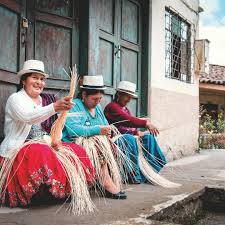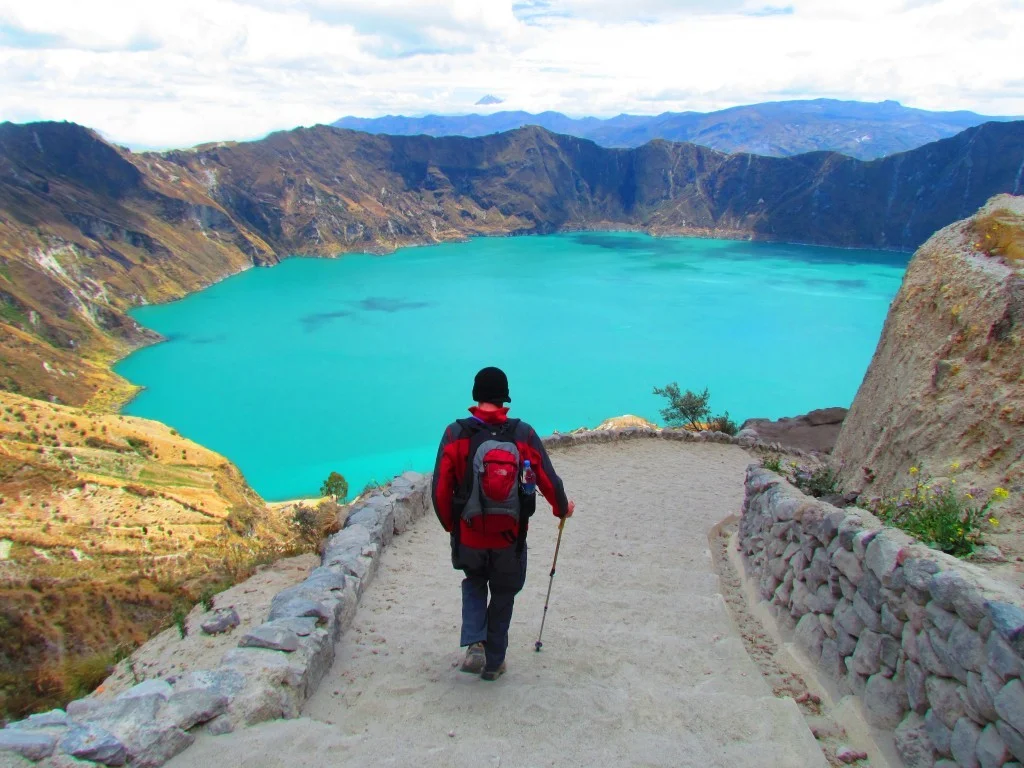Have you ever wondered what makes the city of Cuenca, Ecuador, a standout destination for travelers? Nestled in the heart of the Andes, Cuenca’s enchanting charm and rich history have earned it a coveted spot on the UNESCO World Heritage list. This recognition is not just a feather in its cap but a testament to its exceptional cultural and architectural significance.
The historic center of Cuenca, officially known as Santa Ana de los Ríos de Cuenca, captivates visitors with its harmonious blend of colonial architecture and vibrant local culture. As you stroll through its cobblestone streets, you’ll discover a city that has preserved its heritage while embracing modernity. But what exactly makes Cuenca so special?
In this blog post, we’ll delve into the top 5 reasons why Cuenca is a UNESCO World Heritage Site. From its meticulously planned urban layout, which dates back to the Spanish colonial era, to its role as a melting pot of diverse cultures, Cuenca offers a unique glimpse into the past. We’ll also explore the city’s stunning natural surroundings, which further enhance its allure.
Whether you’re a history buff, an architecture enthusiast, or simply looking for your next travel adventure, Cuenca promises an unforgettable experience. So, join us as we uncover the treasures of this remarkable city and discover why it should be at the top of your travel itinerary. Ready to explore? Let’s dive into the wonders of Cuenca!
The Rich History of Cuenca: A UNESCO Marvel
Cuenca’s history is a fascinating tapestry woven from diverse cultural influences, marking it as a true UNESCO marvel. Founded by the Spanish in 1557, this city has evolved from a colonial town into a vibrant cultural hub. Its historical significance is highlighted by the preservation of its original urban layout and architecture, which reflect Renaissance urban planning principles. This city stands as a testament to the successful fusion of indigenous and colonial cultures, offering a unique glimpse into the past.
The Spanish colonial influence is evident in Cuenca’s meticulously planned streets and squares. The orthogonal grid layout, a hallmark of Renaissance planning, is still visible today, showcasing the foresight of its founders. This planning not only facilitated efficient administration and defense but also allowed for the harmonious integration of indigenous elements into the urban fabric.
Spanish Colonial Foundations
Cuenca’s journey began with its establishment by Spanish settlers who implemented a rigorous urban planning model. The city’s layout followed the guidelines set by King Charles V, emphasizing symmetry and order. This planning was not just about aesthetics; it was a strategic move to establish control and facilitate governance in the new colony.
The influence of Spanish architecture is evident in the city’s grand cathedrals and colonial buildings. These structures, with their intricate facades and robust construction, have withstood the test of time, offering a window into the past. The New Cathedral, with its iconic blue domes, is a prime example of this architectural legacy, drawing visitors from around the world.
Indigenous and Colonial Cultural Fusion
The fusion of indigenous and colonial cultures is a defining feature of Cuenca’s history. Before the Spanish arrival, the area was inhabited by the Cañari people, whose influence is still visible in the city’s cultural practices and traditions. The Spanish settlers, recognizing the value of indigenous knowledge, incorporated local elements into their urban design and daily life.
This cultural blend is evident in the city’s festivals, cuisine, and artisanal crafts. The vibrant Corpus Christi celebrations, for instance, showcase a mix of Catholic and indigenous traditions, creating a unique cultural experience for locals and visitors alike. This harmonious coexistence of cultures is a key reason why Cuenca is celebrated as a UNESCO World Heritage Site.
Preservation of Historical Heritage
Cuenca’s commitment to preserving its historical heritage is evident in its well-maintained architecture and urban layout. The city’s historic center, with its cobblestone streets and colonial buildings, has been carefully preserved to maintain its original charm. This dedication to conservation has earned Cuenca its UNESCO status, recognizing its outstanding universal value.
Efforts to preserve Cuenca’s heritage are ongoing, with local authorities and communities working together to protect and promote the city’s cultural assets. This includes initiatives to restore historical buildings and promote sustainable tourism practices, ensuring that Cuenca’s rich history remains accessible to future generations.
For those interested in exploring more about Cuenca’s historical and cultural offerings, consider visiting the Boutique Hotel Mansión Alcázar, located in the heart of the historic center. This hotel not only offers luxurious accommodations but also provides a gateway to the city’s rich heritage, allowing guests to immerse themselves in the history and charm of Cuenca.
Architectural Wonders of Cuenca: A Visual Feast
Cuenca, Ecuador, is a city where architecture tells the story of its rich cultural tapestry. Recognized as a UNESCO World Heritage Site, Cuenca’s architectural landscape is a harmonious blend of colonial and modern styles. This unique fusion not only enhances the city’s aesthetic appeal but also reflects its historical and cultural diversity.
Walking through Cuenca is like stepping into a living museum, where every building has a story to tell. From the grandeur of its cathedrals to the charm of its colonial homes, Cuenca offers a visual feast for architecture enthusiasts and casual visitors alike. Let’s explore some of the iconic structures that contribute to Cuenca’s status as a UNESCO World Heritage Site.
The New Cathedral: A Symbol of Faith and Resilience
The New Cathedral of Cuenca, or the Cathedral of the Immaculate Conception, stands as a testament to the city’s architectural grandeur. Known for its striking blue domes, this cathedral is an iconic symbol of Cuenca. Construction began in 1885, and its design reflects a blend of Romanesque Revival and Neo-Gothic styles, showcasing the city’s architectural evolution.
The cathedral’s interior is equally impressive, with its marble floors and intricate stained glass windows. It can accommodate up to 9,000 people, making it one of the largest churches in Latin America. The New Cathedral not only serves as a place of worship but also as a cultural landmark, attracting visitors from around the world.
The Hanging Houses: A Marvel of Engineering
Perched on the edge of the Tomebamba River, the Hanging Houses, or “Casas Colgadas,” are a marvel of engineering and a must-see for any visitor to Cuenca. These houses, with their balconies extending over the river, offer stunning views and a glimpse into the city’s past.
Originally built in the 18th century, the Hanging Houses have been meticulously preserved, showcasing the city’s commitment to maintaining its architectural heritage. They serve as a reminder of Cuenca’s ability to adapt and thrive, even in challenging environments.
Preservation Efforts: A Commitment to Heritage
Cuenca’s architectural wonders are not just relics of the past; they are living parts of the city’s identity. Preservation efforts are crucial in maintaining the integrity and authenticity of these structures. Local authorities and communities work tirelessly to restore and protect Cuenca’s architectural gems, ensuring they remain for future generations to admire.
These efforts include initiatives to restore historical buildings and promote sustainable tourism practices. By preserving its architectural heritage, Cuenca not only honors its past but also paves the way for a vibrant future. For those interested in exploring more about Cuenca’s architectural beauty, consider visiting the Boutique Hotel Mansión Alcázar, located in the heart of the historic center.
Cultural Significance of Cuenca: A Living Heritage
Cuenca, Ecuador, is not just a city of architectural marvels and historical significance; it is a vibrant tapestry of cultural traditions and artistic expressions. Its recognition as a UNESCO World Heritage Site is deeply rooted in its living heritage, which encompasses a rich array of festivals, arts, and traditions that reflect its diverse cultural identity. This cultural vibrancy is a testament to Cuenca’s enduring legacy and its role as a hub of cultural preservation.
Visitors to Cuenca are often captivated by the city’s dynamic cultural scene. Where historical traditions blend seamlessly with contemporary artistic expressions. From the colorful Corpus Christi celebrations to the thriving arts community. Cuenca offers a unique cultural experience that is both immersive and enlightening. Let’s delve into the cultural significance of Cuenca and explore the traditions and events that make it a living heritage.
Festivals and Traditions: Celebrating Cuenca’s Heritage
Cuenca’s festivals are a vibrant reflection of its cultural heritage. Offering a glimpse into the city’s rich traditions and communal spirit. One of the most celebrated events is the Corpus Christi festival, a week-long celebration that combines Catholic and indigenous traditions. Streets come alive with colorful processions, traditional music, and elaborate floral displays. Creating a festive atmosphere that draws both locals and tourists.
Another significant event is the Independence Day of Cuenca, celebrated with parades, cultural performances, and traditional cuisine. This event not only commemorates the city’s independence but also showcases its diverse cultural influences. From Spanish colonial to indigenous Cañari traditions. These festivals are not just celebrations; they are a vital part of Cuenca’s cultural identity, preserving traditions for future generations.
The Role of Arts in Cuenca’s Cultural Identity
The arts play a pivotal role in Cuenca’s cultural landscape. With the city being home to a thriving community of artists and artisans. The Cuenca Biennial, an international art exhibition, is a testament to the city’s commitment to promoting artistic expression. This event attracts artists from around the world, showcasing contemporary art that reflects both local and global themes.
Cuenca is also renowned for its traditional crafts, particularly the production of the iconic Panama hat. Despite its name, this hat is a symbol of Ecuadorian craftsmanship. With Cuenca being one of the main centers for its production. Visitors can explore artisan workshops and witness the intricate process of hat-making, gaining insight into the city’s artisanal heritage.
Culinary Traditions: A Taste of Cuenca
Cuenca’s culinary scene is a delightful fusion of flavors, reflecting its diverse cultural influences. Traditional dishes such as mote pillo (a corn-based dish) and cuy asado (roasted guinea pig) offer a taste of the city’s indigenous heritage. These dishes are often prepared using age-old recipes passed down through generations, preserving the culinary traditions of the region.
For those seeking a unique dining experience, Cuenca offers a range of options, from traditional eateries to gourmet restaurants. The city’s culinary offerings are a reflection of its cultural diversity. Providing visitors with a taste of both local and international flavors. Exploring Cuenca’s culinary traditions is a journey through its cultural history, offering a deeper understanding of the city’s heritage.
Why Cuenca’s UNESCO Status Matters
Cuenca’s designation as a UNESCO World Heritage Site is not just an accolade. But a recognition of its profound historical and cultural significance. This acknowledgment highlights Cuenca’s role as a custodian of rich heritage. Where its colonial architecture and vibrant cultural traditions are meticulously preserved. The city’s harmonious blend of the old and the new makes it an exemplary model of cultural fusion and historical preservation.
Preserving Cuenca’s Heritage is crucial not only for maintaining its UNESCO status. But also for promoting sustainable tourism and cultural exchange. The city’s commitment to conservation ensures that its unique charm and historical treasures remain intact for future generations. Efforts by the local community and authorities to restore and protect Cuenca’s architectural gems underscore the importance of heritage preservation in fostering a sense of identity and continuity.
- Historical Significance: Cuenca’s urban layout and architecture reflect a successful fusion of indigenous and colonial influences.
- Architectural Wonders: The city’s iconic structures, like the New Cathedral and Hanging Houses, are marvels of design and engineering.
- Cultural Vibrancy: Festivals and arts in Cuenca offer a unique window into its diverse cultural identity.
For those eager to explore the wonders of Cuenca, a visit to the Boutique Hotel Mansión Alcázar provides an immersive experience in the heart of the historic center. By staying at this elegant hotel, visitors can easily access Cuenca’s historical and cultural landmarks. Ensuring a memorable journey through time.
In conclusion, Cuenca’s UNESCO status is more than a title. It is a call to action for travelers and locals alike to cherish and protect this extraordinary city. Whether you’re drawn by its historical allure, architectural beauty, or cultural richness. Cuenca invites you to discover its secrets and contribute to its ongoing legacy.




